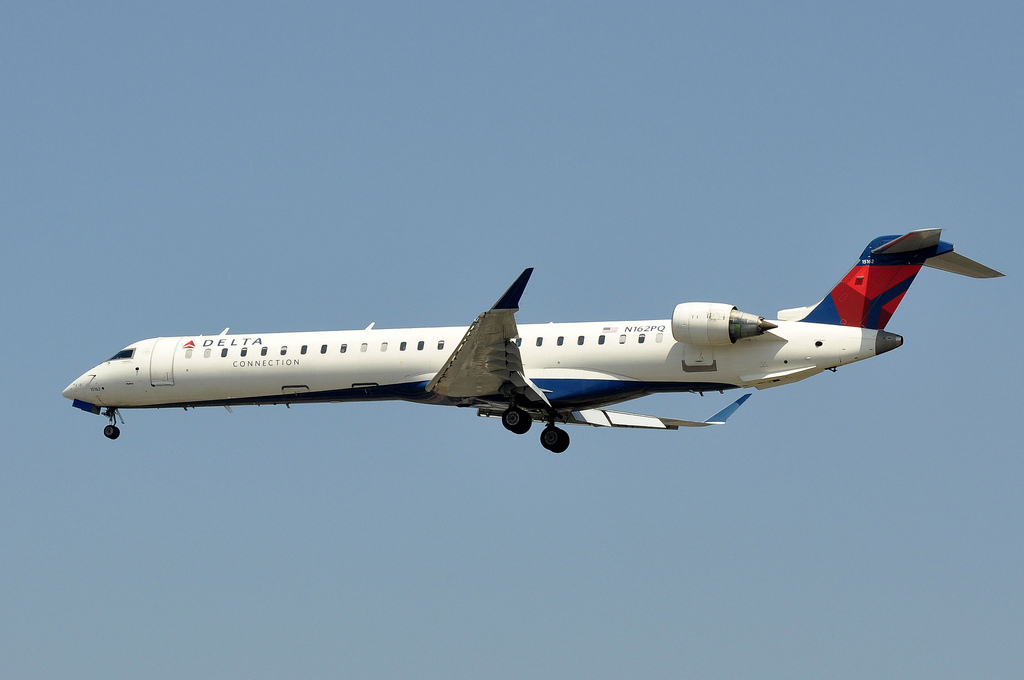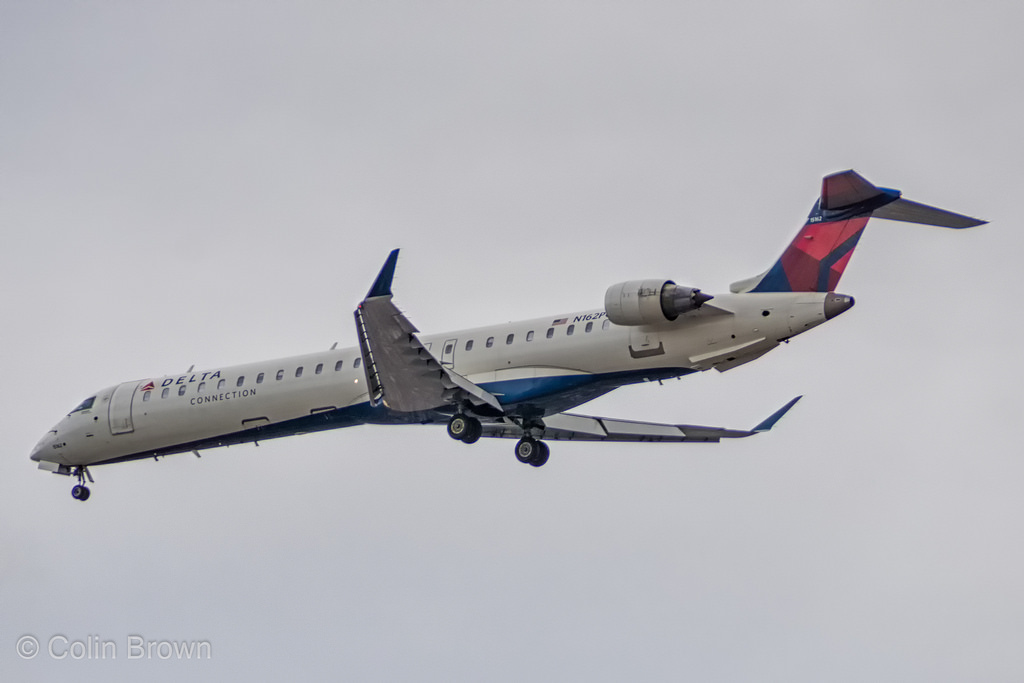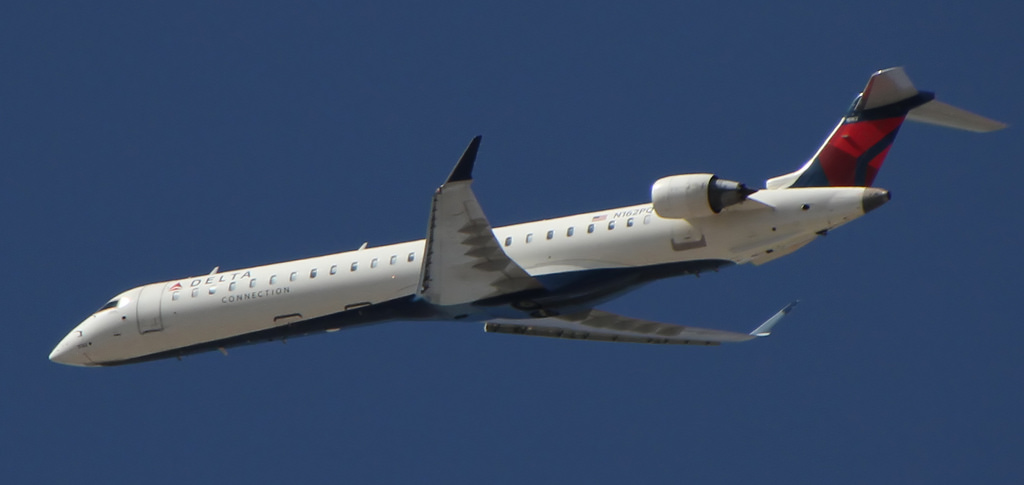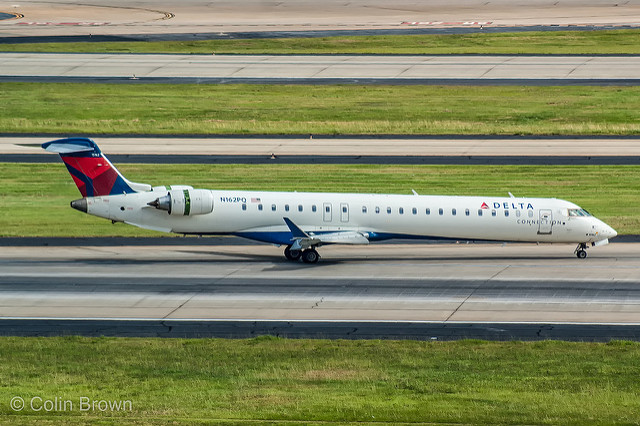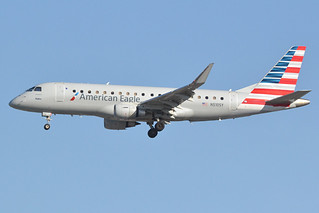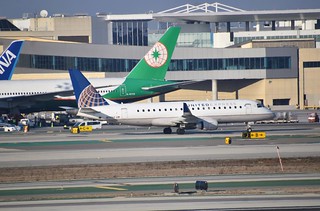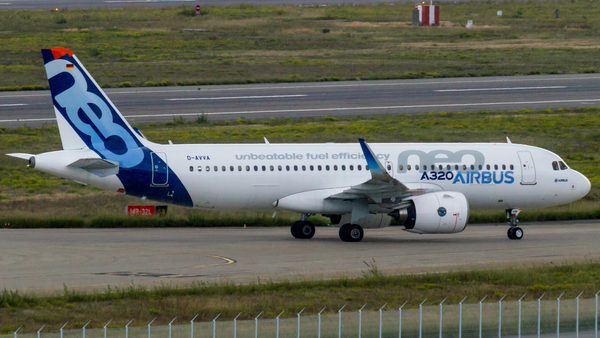Skywest CRJ9 at Medford on Dec 24th 2017, GPWS alert on approach
Last Update: March 31, 2021 / 21:57:02 GMT/Zulu time
Incident Facts
Date of incident
Dec 24, 2017
Classification
Incident
Airline
Skywest Airlines
Flight number
OO-3567
Departure
Salt Lake City, United States
Destination
Medford, United States
Aircraft Registration
N162PQ
Aircraft Type
Canadair CL-600 Regional Jet CRJ-705
ICAO Type Designator
CRJ9
Airport ICAO Code
KMFR
On Jan 30th 2021 the NTSB reported an investigation into the incident is underway. The aircraft operated below the minimum vectoring altitude while on an instrument approach to Medford in IMC. The crew initiated a climb after the EGPWS issued an alert.
On Mar 31st 2021 the NTSB released their final report concluding the probable cause of the incident was:
The incident was caused by the air traffic controller assigning an altitude below the published procedure altitude for the approach segment to be flown prior to the aircraft being established on a published portion of the approach. Contributing to the incident was the flight crew's failure to identify the appropriate altitude for the segment of the approach being flown and query the controller before subsequent decent below the published minimum altitude.
The NTSB reported the captain (30, ATPL, about 3000-3600 hours on type, about 800 hours in command) was pilot monitoring, the first officer (23, ATPL, about 2100 hours total, about 500 hours on type) was pilot flying.
The NTSB analysed:
After initial contact with the flight, the air traffic controller issued the pilots a clearance to cross the initial approach fix CEGAN at or above 7,800 feet and cleared the flight for the published instrument procedure. The published altitude for the instrument procedure was at or above 10,000 feet from CEGAN until BRKET while established on the arc. The flight crew accepted the ATC clearance, and descended from 12,000 feet to 7,800 feet while established on the arc. The minimum vectoring altitude (MVA) for the airspace containing the arc was 7,800 feet, however, just prior to BRKET the floor of the MVA raised to 8,700 feet. The MVA altitudes as depicted on the radar display are for air traffic control and are not available to flight crews. Interviews with the controller indicated there was an expectation that the pilot would not descend below the 10,000 feet as published despite being assigned the "at or above 7,800 feet" crossing restriction.
The controller introduced risk by assigning the lowest altitude in the MVA area containing the fix CEGAN (7,800 feet) and expecting the crew to stop their descent at the higher published altitude of 10,000 feet. There was no operational or procedural advantage gained by assigning the flight crew 7,800 feet when the controller expected the crew to stop at 10,000 feet. Had the controller issued the published altitude of 10,000 feet and issued the approach clearance, the incident likely would not have occurred because the crew could have descended to 10,000 feet and then descended according to the published procedure and not below the MVA for that segment.
In the incident sequence, the controller instructed the flight crew to cross the initial approach fix (IAF) CEGAN at 7,800 feet, and, the flight did not become established on the published procedure until after CEGAN when established on the arc. The controller was required to assign an altitude to maintain until being established on the procedure, in this case at or above 10,000 feet as published.
When the flight crew received the approach clearance that included a descent below the published altitude, they did not query the controller or stop the descent at the published altitude as required in accordance with 14 Code of Federal Regulations (CFR) Part 121.
As a result of the incident, the FAA initiated an education program with briefings and information graphics to the air traffic control workforce to emphasize MVA and MSAW conditions. The topics included the use of MVA maps, assignment of appropriate altitudes, ensuring correct altitudes are maintained, and a reminder to know approach procedures and appropriate altitudes.
During the incident investigation, it was determined that an antenna adjacent to the IAF BRKET was not depicted on the Jeppesen produced approach chart for the VOR DME C current on the day the incident. Jeppesen changed the approach chart to reflect the antennae and a new obstacle height of 7,614 feet. Additionally, Jeppesen conducted a review of the terrain surrounding the MFR airport to support produced navigation products.
Metars:
KMFR 250353Z 00000KT 10SM SCT060 OVC075 06/04 A3018 RMK AO2 RAE26 SLP226 P0000 T00560039=
KMFR 250253Z 09004KT 10SM -RA SCT055 BKN075 OVC085 06/03 A3018 RMK AO2 RAB04E13B48 SLP227 P0000 60000 T00560033 53011=
KMFR 250153Z 00000KT 10SM OVC070 06/03 A3017 RMK AO2 SLP223 T00610028=
KMFR 250053Z 15004KT 10SM BKN065 OVC090 06/03 A3015 RMK AO2 SLP218 T00560028=
KMFR 242353Z 32003KT 10SM OVC100 06/03 A3015 RMK AO2 SLP215 T00610028 10061 20033 55003=
KMFR 242253Z 00000KT 10SM OVC080 06/03 A3014 RMK AO2 SLP213 T00610028=
KMFR 242153Z 28003KT 10SM OVC080 06/03 A3015 RMK AO2 SLP218 T00610028=
KMFR 242053Z 00000KT 10SM OVC095 06/03 A3016 RMK AO2 SLP219 T00560028 58012
Aircraft Registration Data
Incident Facts
Date of incident
Dec 24, 2017
Classification
Incident
Airline
Skywest Airlines
Flight number
OO-3567
Departure
Salt Lake City, United States
Destination
Medford, United States
Aircraft Registration
N162PQ
Aircraft Type
Canadair CL-600 Regional Jet CRJ-705
ICAO Type Designator
CRJ9
Airport ICAO Code
KMFR
This article is published under license from Avherald.com. © of text by Avherald.com.
Article source
You can read 2 more free articles without a subscription.
Subscribe now and continue reading without any limits!
Read unlimited articles and receive our daily update briefing. Gain better insights into what is happening in commercial aviation safety.
Send tip
Support AeroInside by sending a small tip amount.
Related articles
Sykwest CRJ9 near Helena on Jun 24th 2018, cabin pressure problem
A Skywest USA Canadair CRJ-900 on behalf of Delta Airlines, registration N162PQ performing flight OO-4521/DL-4521 from Pasco,WA to Minneapolis,MN…
Skywest CRJ9 near Minneapolis on Feb 24th 2016, autopilot with own mind
A Skywest Canadair CRJ-900 on behalf of Delta Airlines, registration N162PQ performing flight OO-4563/DL-4563 from Minneapolis,MN to Houston…
Skywest E175 at Omaha on Oct 20th 2025, knocking on cockpit's door
A Skywest Embraer ERJ-175 on behalf of American Airlines, registration N510SY performing flight AA-6469 from Omaha,NE to Los Angeles,CA (USA), was…
Skywest E175 near Austin on Aug 28th 2025, turbulence causes 2 injuries
A Skywest Embraer ERJ-175 on behalf of United, registration N110SY performing flight UA-5971 from Aspen,CO to Houston Intercontinental,TX (USA) with…
Skywest CRJ7 at Appleton on Apr 27th 2025, bird strike
A Skywest Canadair CRJ-700 on behalf of United, registration N718EV performing flight UA-4748 from Chicago O'Hare,IL to Appleton,WI (USA), departed…
Skywest CRJ7 at Dallas on Apr 11th 2025, cabin did not pressurize
A Skywest Airlines Canadair CRJ-700 on behalf of American Airlines, registration N741EV performing flight AA-6269 from Dallas Ft. Worth,TX to San…
Skywest CRJ2 at Johnstown on Mar 24th 2025, wing tip strike on landing
A Skywest Canadair CRJ-200 on behalf of United, registration N961SW performing flight UA-5046 from Washington Dulles,DC to Johnstown,PA (USA), landed…
Newest articles
UPS MD11 at Louisville on Nov 4th 2025, burst into flames on takeoff
A UPS United Parcel Service McDonnell Douglas MD-11, registration N259UP performing flight 5X-2976 from Louisville,KY to Honolulu,HI (USA) with 3…
India A20N near Bhopal on Nov 3rd 2025, cargo smoke indication
An Air India Airbus A320-200N, registration VT-EXO performing flight AI-2487 from Delhi to Bangalore (India) with 172 people on board, was enroute at…
Subscribe today
Are you researching aviation incidents? Get access to AeroInside Insights, unlimited read access and receive the daily newsletter.
Pick your plan and subscribePartner

ELITE Simulation Solutions is a leading global provider of Flight Simulation Training Devices, IFR training software as well as flight controls and related services. Find out more.
SafetyScan Pro provides streamlined access to thousands of aviation accident reports. Tailored for your safety management efforts. Book your demo today
AeroInside Blog
Popular aircraft
Airbus A320Boeing 737-800
Boeing 737-800 MAX
Popular airlines
American AirlinesUnited
Delta
Air Canada
Lufthansa
British Airways


